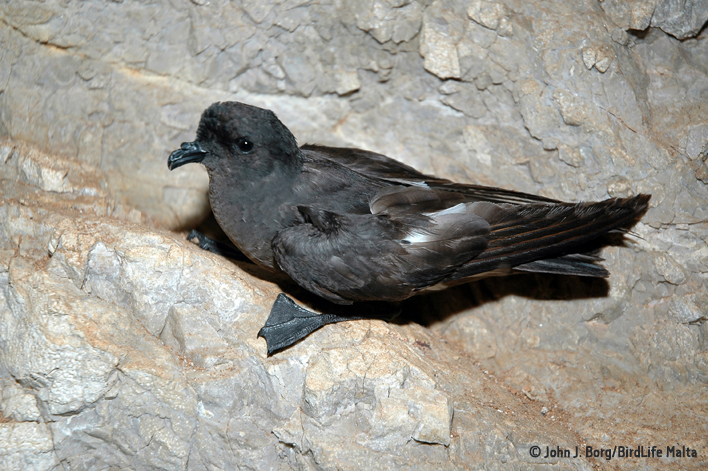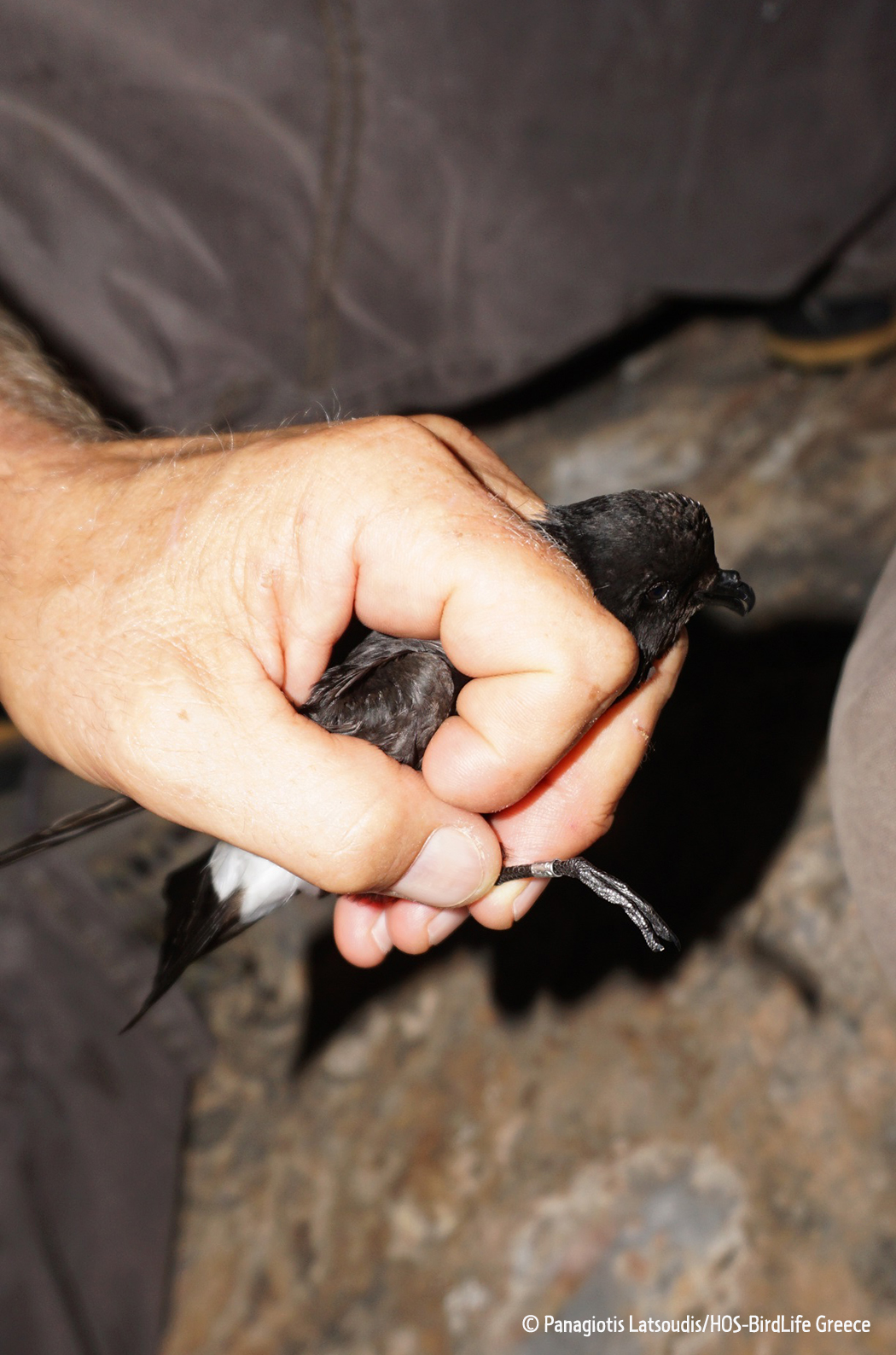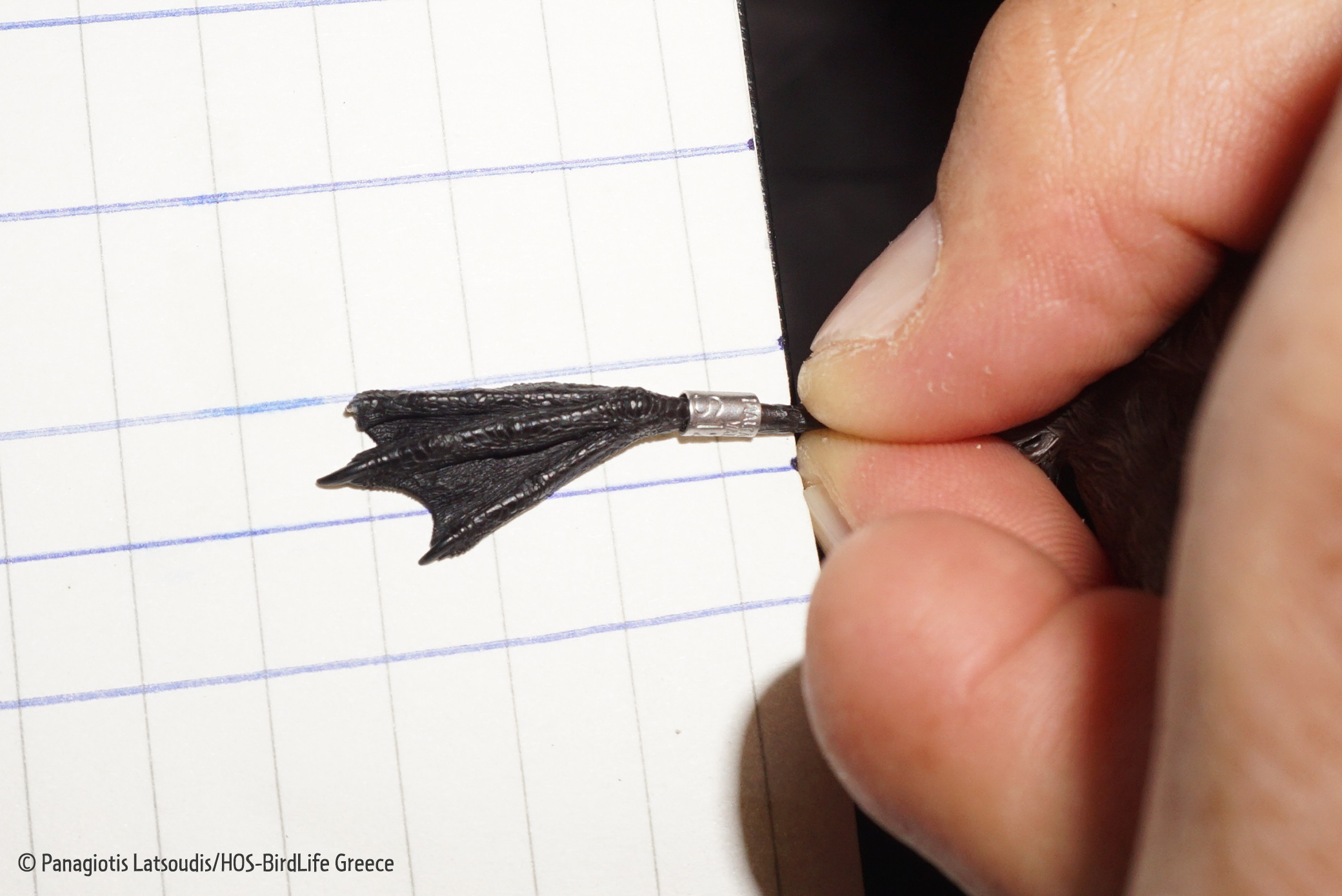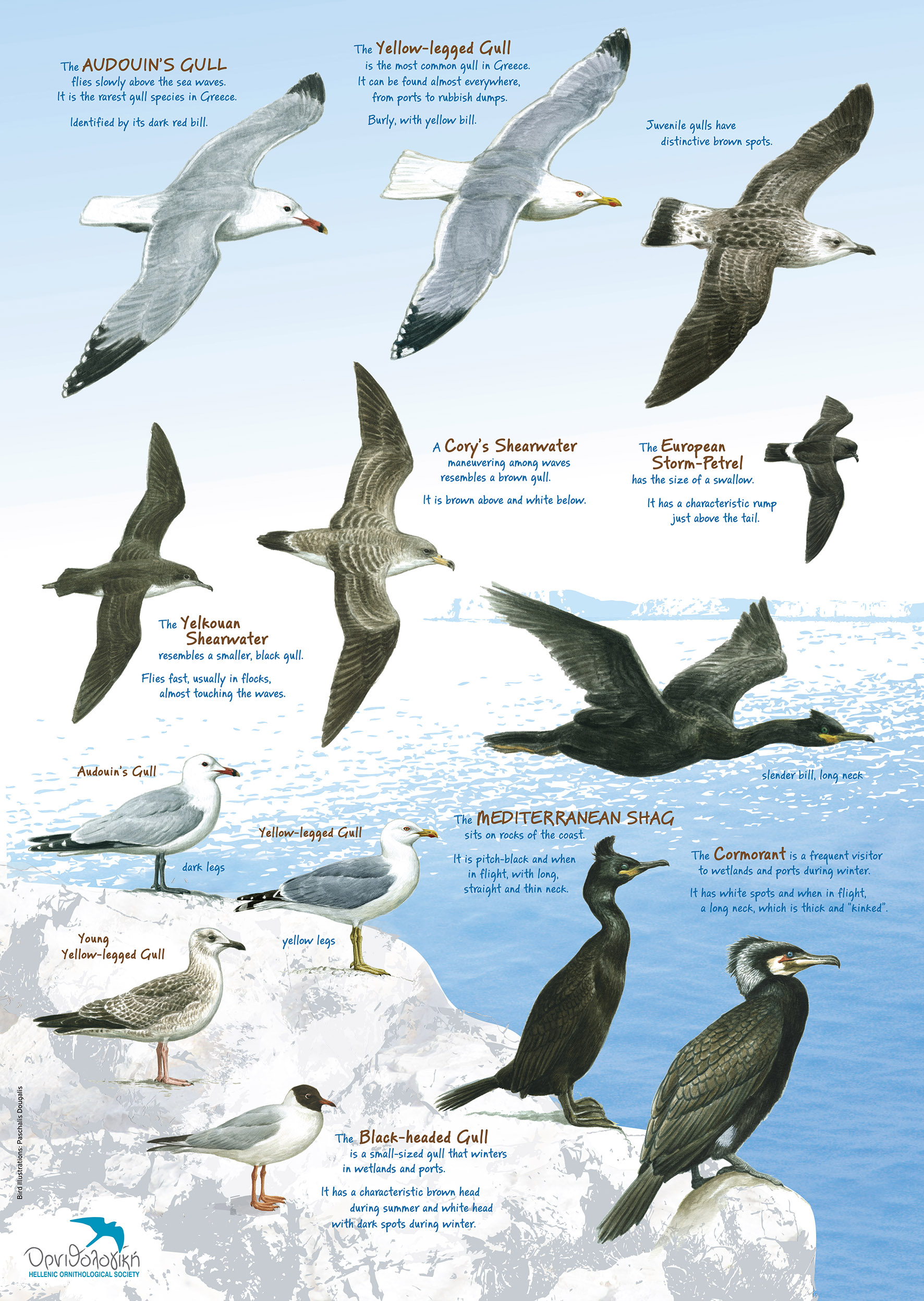
Long term conservation work of the Hellenic Ornithological Society/BirdLife Greece in the Aegean has resulted in a great discovery for the most enigmatic bird of the Aegean Sea: a connection between the Storm Petrel populations in the Aegean and those of the Central Mediterranean Basin has become evident for the very first time!
Following 5 years of constant fieldwork and ringing of the Storm Petrels in the Aegean Sea, in collaboration with the Hellenic Bird Ringing Center, HOS/BirdLife Greece has recovered a Storm Petrel ringed in 2008 in Malta by BirdLife Malta. Until now, the Storm Petrel population of the Aegean was considered completely isolated. In addition, according to recovery data provided by the Maltese Ringing Scheme, the bird is over 11 years old! This age is impressive for such a small and delicate bird that lives in the open sea, facing year after year harsh winters, storms, massive waves and bad weather. Also, the species is considered extremely vulnerable on land. Islets, which host its unique egg must be rat free, something really rare on those islets with human presence (either settlements, piers or any other infrastructure such as wind farms).
Storm Petrels, as well as Audouin’s Gulls, are the rarest seabirds in Greece. They resemble tiny Albatrosses, as their size is similar to that of a sparrow, but their webbed toes and tubular nostrils are characteristics of all the Procellariiform family to which they belong. Their pitch black plumage with the snow-white rump makes them blend well with the open sea and the breaking waves. All these characteristics combined with its’ small size, transform this little seabird to a dark "ghost" of the sea, attracting great birdwatcher interest.

The long-term ringing project of the Storm Petrels, as well as census and colony monitoring of their breeding population in Greece is implemented with the financial support of the A.G. Leventis Foundation.






